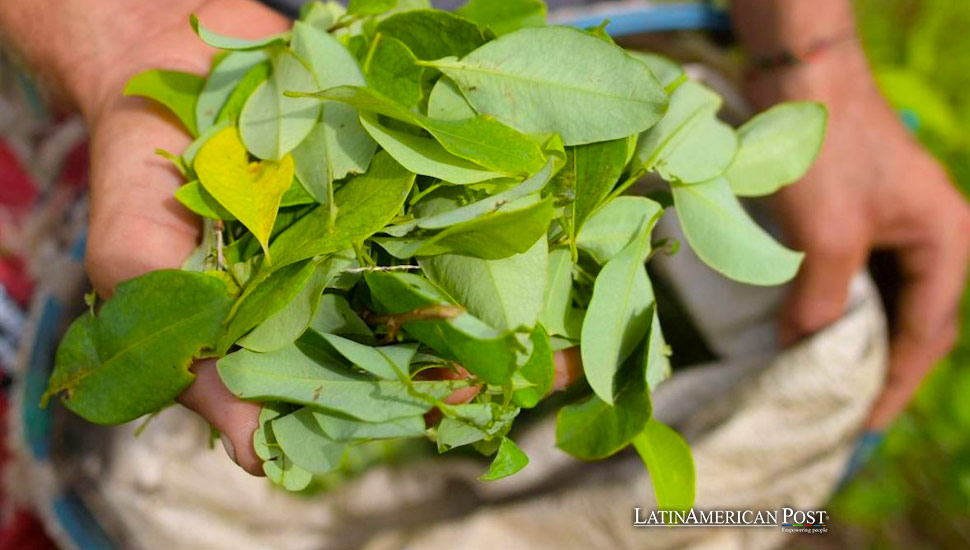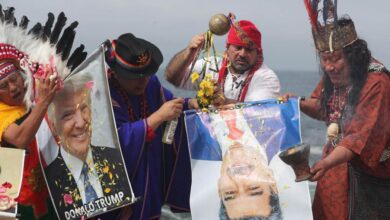Peru Sees Decline in Coca Cultivation After Eight Years of Increase

Peru’s latest coca cultivation report reveals a decrease in the area of coca crops for the first time in eight years, thanks to coordinated efforts by state entities against drug trafficking.
Peru has recently witnessed a significant change in its fight against drug trafficking. According to the 2023 Coca-Crop Monitoring Report, the country saw a decline in coca cultivation for the first time in eight years. The report documented 92,784 hectares of coca crops in 2023, compared to 95,008 hectares in 2022. This reduction of 2,224 hectares, equivalent to a 2.3% decrease in the total cultivated area, is attributed to state entities’ joint actions in combatting the narcotics business model, as highlighted by the National Commission for Development and Life without Drugs (Devida).
The report indicates that eight out of the thirteen monitored departments showed a reduction in coca cultivation. Notably, significant decreases were observed in the Amazonian regions of Ucayali and Loreto, where illegal crop eradication efforts were concentrated in areas such as Bajo Amazonas, Putumayo, Callería, Aguaytía, and Pichis-Palcazú-Pachitea. Additionally, ten previously growing production zones reversed their trends, including Marañón (-58%), Camanti (-53%), Alto Chicama (-48%), Yaguas (-42%), and Callería (-37%).
Conversely, five departments experienced increased coca cultivation, with the south Andean region of Ayacucho leading the way. Other areas showing growth included parts of Amazonas, Huallaga, and Bajo Ucayali, although these increases remained below 50%.
Carlos Figueroa, Devida’s executive president, credited the reduction in coca cultivation to coordinated government actions and the support of cooperating entities. He noted that these efforts prevented a projected 17% growth in coca crops, which would have resulted in 109,259 hectares of coca and approximately 151 tons of cocaine, equivalent to 604 million doses, not being produced.
Decreases in Protected Areas and Indigenous Lands
The monitoring report also recorded decreased coca cultivation within Protected Natural Areas, dropping from 439 hectares in 2022 to 414 hectares in 2023. In Buffer Zones, the reduction was from 14,426 hectares to 14,373 hectares. Furthermore, the trend of increasing coca cultivation in areas inhabited by indigenous or native communities was reversed, with the cultivated area decreasing from 18,674 hectares last year to 18,050 hectares this year.
The report incorporated an international quality assurance system, backed by the United Nations Office on Drugs and Crime (UNODC), and an early warning system that expanded monitoring to 21 zones with coca cultivation, including the Tahuamanu area in Madre de Dios, bordering Bolivia and Brazil.
Leonardo Correa, the Regional Coordinator for Analysis, Monitoring, and Innovation at UNODC for the Andean Region and Southern Cone, emphasized that this year, for the first time, the data generated by the Peruvian government on illicit coca leaf cultivation included quality assurance. “The continuous efforts will provide valuable tools to build evidence-based public policies, and we join the Peruvian State’s commitment to contributing to a safer Peru and a world free from illicit drugs,” Correa said during the report’s presentation in Lima.
Impact of Reduction Efforts
The coordinated efforts between Peruvian state entities and international bodies, such as the United Nations Office on Drugs and Crime (UNODC), have proven crucial in reversing the increasing trend of coca cultivation. The success in reducing coca cultivation not only represents a significant achievement in the fight against drug trafficking but also underscores the importance of international support in addressing this global issue. This success also highlights the potential for sustainable development in regions previously dominated by illegal crop cultivation.
Moreover, the focus on eradicating coca crops in indigenous and protected areas underscores the importance of preserving biodiversity and protecting vulnerable communities from the adverse effects of drug trafficking. Reducing coca cultivation within these areas aligns with broader environmental and social goals, contributing to the overall well-being of affected regions.
Despite the positive trends reported in 2023, challenges remain. The fluctuation in coca cultivation across different regions underscores the need for continuous and adaptive strategies. The Peruvian government, supported by international partners, must remain vigilant and proactive in addressing the dynamic nature of coca cultivation and drug trafficking, emphasizing the urgency and importance of sustained progress.
In addition to eradication efforts, comprehensive development programs that provide alternative livelihoods for communities reliant on coca cultivation are crucial. Sustainable agriculture, education, and infrastructure development offer long-term solutions that deter the return to illegal activities, reassuring the audience about the long-term strategies being implemented.
Furthermore, the success of these initiatives depends on robust legal and institutional frameworks. Strengthening law enforcement, judicial systems, and community engagement will be vital to maintaining the momentum gained and ensuring that reductions in coca cultivation are sustained over the long term.
The 2023 Coca Crop Monitoring Report marks a significant milestone in Peru’s fight against drug trafficking. The reduction in coca cultivation, achieved through coordinated efforts and international support, highlights the effectiveness of a multifaceted approach to addressing this complex issue. As Peru continues to navigate the challenges ahead, the lessons learned and the foundations built this year will be crucial in shaping a future where sustainable development and security go hand in hand.
Also read: The Fight Against Crime Impunity in Peru
By focusing on collaboration, innovation, and community engagement, Peru can continue to make strides to combat coca cultivation and its associated challenges. The journey is far from over, but the progress offers hope and a roadmap for future success in creating a safer, more prosperous Peru.





